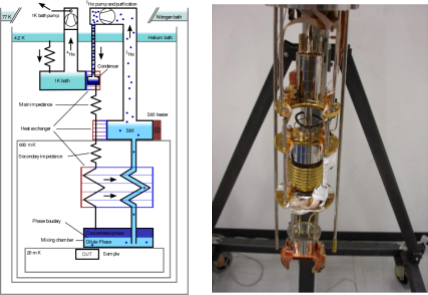IBM to Build Custom Fridge to Run Future Quantum Computers
| 29-12-2020 | By Sam Brown
To build a one million qubit quantum computer, IBM has realised that no commercial refrigeration system exists that would allow such development. Why do quantum computers require such low temperatures, a dilution refrigerator, and what does IBM plan to do?
Why do quantum computers operate at such low temperatures?
Quantum computers are fundamentally different from the computers used in everyday applications from word processing to games. Many news stories have broken how these machines will revolutionise computing and how people’s computers will move to the quantum realm.
The truth is that quantum computers are extremely good at solving specific tasks (such as database searches), but not so good at generic processing. Therefore, quantum computers will work alongside generic computers so that programs can use the best of both worlds.
For current quantum computers to work, they need to be kept extremely cold, colder than outer space (less than 1 kelvin). When looking at quantum computing hardware, most of it is involved with cryogenic cooling utilising liquid helium and nitrogen.
Quantum computers require such cold temperatures to preserve the quantum state of qubits. Quantum computers can only work thanks to the principle of superposition (whereby a qubits state exists in a range of probabilities). Still, this superposition state is lost (i.e. collapses), when the qubit is observed.
An observation does not mean looking at the particle. It means affecting it via an external influence, a magnetic field, photon, or mechanical force. Since temperature is the energetic movement of atoms, a qubit exposed to any thermal energy will have its superposition collapsed as a result of the thermal interaction.
Therefore, cooling down qubits to the sub kelvin temperature range helps to minimise atoms' thermal movement, thus preventing the collapsing of the qubit’s superposition.
How do quantum computers achieve such cold temperatures?
To get such cold temperatures, refrigeration systems are used that utilise liquid Helium and Nitrogen. Temperatures down to 4K can easily be achieved by taking advantage of evaporation of He-3, which has a boiling point of 3.19K. However, quantum computers require even colder temperatures, and simply boiling away gasses to obtain the desired temperature is wasteful (especially when considering the price of cryogenic liquids).
One method commonly used is a dilution refrigerator, and these can achieve temperatures as low as 2mK. The exact operation behind these systems is extremely complex and relies on phase changes between the different isotopes of He (He-3 and He-4). However, the overall system is very similar to a standard fridge; the use of compression and evaporation stages helps lower the temperature, while the use of various He baths at different pressures allows for further reduction of the working temperature fluid.

Credit: Wikipedia
What is the refrigeration system IBM is planning to build?
The complexity of cryogenic cooling systems means that such systems are costly and only available from a handful of companies. IBM, a major player in future computing technology, is developing quantum computers, and the largest system they have to date contains 64-qubits. The power of a quantum computer depends on the number of qubits it contains, and therefore IBM has set a goal to build a quantum computer with one million qubits.
However, after analysing the cooling systems available, IBM has discovered that no commercial system currently exists that would allow such a computer. Therefore, IBM has recently announced its intention to develop their own cooling technology solutions to enable the development of such a quantum computer.
Their new refrigeration system will operate using the same principles found in current dilution refrigerators, and have an expected 6 feet wide and 10 feet high. The proposed fridge's target temperature is 15 millikelvin, which will allow for reliable quantum computers.
According to the development team at IBM, other solutions currently exist to produce cryogenic temperatures, such as tunnelling electrons through a 2nm-thick insulator. When electrons are provided with only a small amount of the energy needed to tunnel through the material, the electrons absorb thermal energy from the quantum device mounted to the 2nm-thick insulator, thus cooling it down. However, such solutions are still in development, and such a large quantum processor may be easier to work with using a dilute refrigerator instead.
Read More
